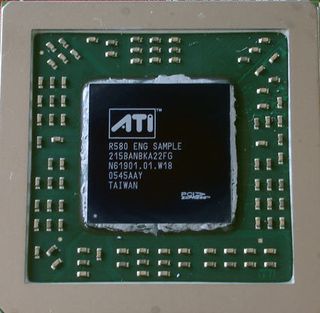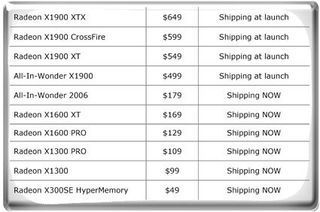ATI's Radeon X1900 Heats Up With 48 Shader Units
Conclusion

ATI certainly has the upper hand with X1900. Users looking for the power of a dual card solution can find it in the power of a single card - the X1900XTX - and with Crossfire, ATI deals out even more frames per second.
In contrast, lower resolution gaming is losing its need for extravagant hardware, as the rest of the system is hindering further maximum frame rates. To accent this change, gaming has been shifting over time from maximum average frames to a minimum frames per second experience. Clearly the GeForce 7800 GTX 512 has the firepower to deliver, but the Radeon X1900 series takes the top step on the platform.
For users looking for something to drive monitors with resolutions greater than 1600x1200, you need look no further than these cards, which have shifted the entire expectation level. What used to be playable only on 1024x768 can now run at the same frame rates at 1600x1200. Although professional gamers will continue to play at low resolutions and maximum frames as they look for the next kill, the rest of the gaming world could move up a size level, enjoying monitors that progressively get bigger, brighter, and easier on the billfold.

We will evaluate this trend later this year, to see where the typical gamer stands. If there is demand for super resolution gaming then we will rise to meet it. Another topic we will cover is the disparity between the technology solutions from ATI and NVIDIA, and we'll get "down and dirty" with how each makes the virtual world come alive. As one person put it, "Graphics is the art of Chi-Ting. We do the most work with the least amount of effort." And each company does this their own special way.
For now, we will bask in the glow of ATI's victory in both the single and dual card segments. With the race flying along at all-time speed records, where will we go from here?
Stay on the Cutting Edge
Join the experts who read Tom's Hardware for the inside track on enthusiast PC tech news — and have for over 25 years. We'll send breaking news and in-depth reviews of CPUs, GPUs, AI, maker hardware and more straight to your inbox.
Most Popular

